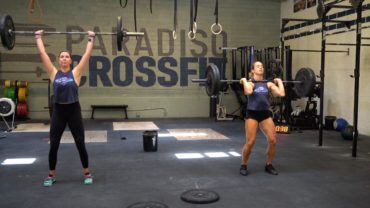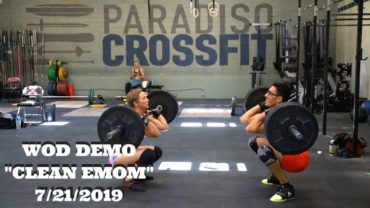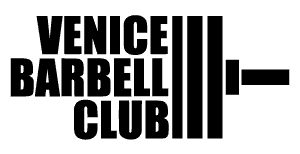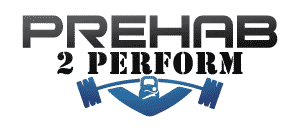Accelerated Learning and EIE
Friday, January 24, 2014
Prehab:
Hip Extension w/band
Foam Roll Hip Flexor/Quads
Warm Up:
2 Rounds:
200 meter Run
20 Bird Dogs
20 Jumping Lunges (10 each side)
10 T-Push Ups
Classic Strength:
Back Squat: 8-5-3-3 Heavier than last week
5 Strict Dips plus ME kipping Dips
Notes: Perform the dips between your squat sets. The Squats should ideally be performed with no break at the top. Scale the dips to a high box setup for more stability and to focus on depth, lockout and kipping technique.
Advanced Strength:
Back Squat: 1X8@80%, 1X5@85%, 2X3@90%
6 Strict deficit HSPU 6/4″ in between sets
Conditioning:
Row a 2k
EMOM for five minutes 15 target burpees (6” target)
Row 1K
Notes: This is one continuous piece. After you row your 2k, wait until the next full minute on the clock to start performing your Burpees. If you cannot complete 15 burpees in a minute pick a challenging number you believe you can complete and try to hold it for the 5 minutes. Immediately move into your 1k Row after the EMOM. If there are limited rowers, sub a 1 mile run and 800m run respectively.
Midline:
4 Rounds
30 sec Hollow Hold
30 sec Arch Hold
Today’s post comes from our own Matt Walrath. He has some great insight on how to be successful during the EIE Challenge. Please Read and POST COMMENTS!
Tim Ferriss is uncommonly good at learning. He has set Guinness World records and won world championships in Tango, he is a Chinese kickboxing champion, he knows more languages than Rosetta Stone…I’ll stop reciting his list of achievements and get to the point. Do you think this man is a superhuman, smart drug-fueled genetic freak? Or is he just a systems thinker with an unrivaled curiosity? I choose to believe the latter.
In his book, The 4-Hour Chef, Ferriss outlines his system for accelerated learning which he has successfully applied to achieve goals ranging from the aforementioned achievements to becoming a Chef in weeks. I want to give you all a brief outline of this system with the hopes that you can apply it to achieve your goals for the EIE challenge and beyond.
Ferriss’s system for accelerated learning can be broken down into 4 parts, and remembered using the acronym DiSSS. Here is what each stands for, and a brief description of what they mean:
Deconstruction– Breaking a large, intimidating goal down into manageable pieces.
Selection–Do as little as is needed to achieve your goal. What is the minimum effective dose to achieve your goal? Think Pareto’s law, what is the 20% you can do that will provide 80% of the results?
Sequencing–What is a logical way to sequence each piece you have deconstructed and selected to get from point A to point B as quickly as possible? Does one piece have to be learned before another? Which piece can you achieve quickly based on past experience?
Stakes–Set an incentive for if you achieve your goal on a timeline and a disincentive for failing (actually a more powerful motivator).
Each piece of the learning puzzle has a few tools or techniques you can use.
Deconstruction
To deconstructyour task, you need to reduce the task to its smallest parts. Tim uses the example of learning the 1945 kanji characters in the Japanese alphabet that often consist of 15+ strokes(radicals). There are 214 radicals that are combined to create each kanji character. By learning the 214 radicals, Ferriss was able to greatly reduce the mammoth task of learning 1945 characters.
You should also interview experts who know your goal better than anybody. You have access to some of the best coaches in their respective fields right in PCF, so schedule a private session with one who understands your goal and ask them questions to get to the root of what you need to do to achieve your goal. Ask the coaches where they learned this information and go to the source yourself.
If you know that there is a widely accepted path to your goal, try reversing it and see what happens. For example, it is ‘common knowledge’ that a low-fat, high carb diet is healthy. As most of you know, this is not the best path to health or weight loss as the good ol’ government might have you believe. So lets reverse it, does a high fat, low carb diet lead to health and weight loss or death and morbid obesity? I can confidently say the former, and some endurance athletes, like Dr. Peter Attia actually prefer this method (known as ketogenic dieting) for fueling endurance performance!
Selection
As far as selection goes, Ferriss wants you to understand that there is a “Minimum Effective Dose” (MED) to achieve anything. The example he uses is consuming 30g of protein within 30 minutes of waking up being the MED for fat loss (if you have a fat loss goal, try this and PLEASE let me know how it goes).
He also mentions you should distill the task into its fewest moving pieces. For example, if you read a recipe, could you make it with half the ingredients and half the steps to create a meal that you and your guests will love?
Sequencing
When it comes to sequencing, start backward. This is different than reversal in the deconstruction toolbox. This means start at the end and work backwards. If you are learning chess, learn the end game with few pieces on the board, rather than openings. If you are learning to snatch, learn how to move the weight from the high hang to overhead rather than practicing from the floor.
You should also learn what the greats or your coach explicitly says to do- for example if you are learning to squat and a coach tells you explicitly to force your knees out. Also, learn what your coach implicitly means but might not verbalize. To use the squatting example again a coach explicitly says “knees out” but also implicitly is telling you that you should load and activate (squeeze) your glutes to rotate your femur, forcing your knees out and simultaneously moving your body up and down. I think interviewing and asking hard questions of your coach is the best way to uncover implicit knowledge.
You also need to identify what you can become good at or accomplish quicker than others. How do you do this? Ask yourself the following questions: What is common among the best who have achieved my goal? Which commonality is not being actively taught in most classes? Which answer to the previous question can I get good at quickly based on my experience? Where the answers to these 3 questions intersect is the skill(s) you should learn first. Find a coach who can help you learn each piece of your your sequence, and advise the best order.
Stakes
You might think that setting up a positive incentive, like “I get to eat a whole pint of ice cream on top of a giant reeses peanut butter cup covered in bacon and showered with 24k gold leaf” will help you reach your goal. Research, however, has showed that negative stakes, like the thought of having to donate $50 to a charity or organization you’d rather take a 45 pound iron plate to the big toe than support, will actually more than double your chance of success. So, I say set up both an awesome positive incentive and terrible negative stake!
If you’d like to see a case study of this accelerated learning approach in action, check out this blog by a British fellow who successfully applied Ferriss’s systems to go from no climbing experience to world-class climber in 4 months! [link to:http://harrycloudfoot.com/2013/08/06/self-experiment-learning-how-to-climb-final-part-how-to-seriously-push-your-grade-beginner-to-advanced-in-16-weeks/]















